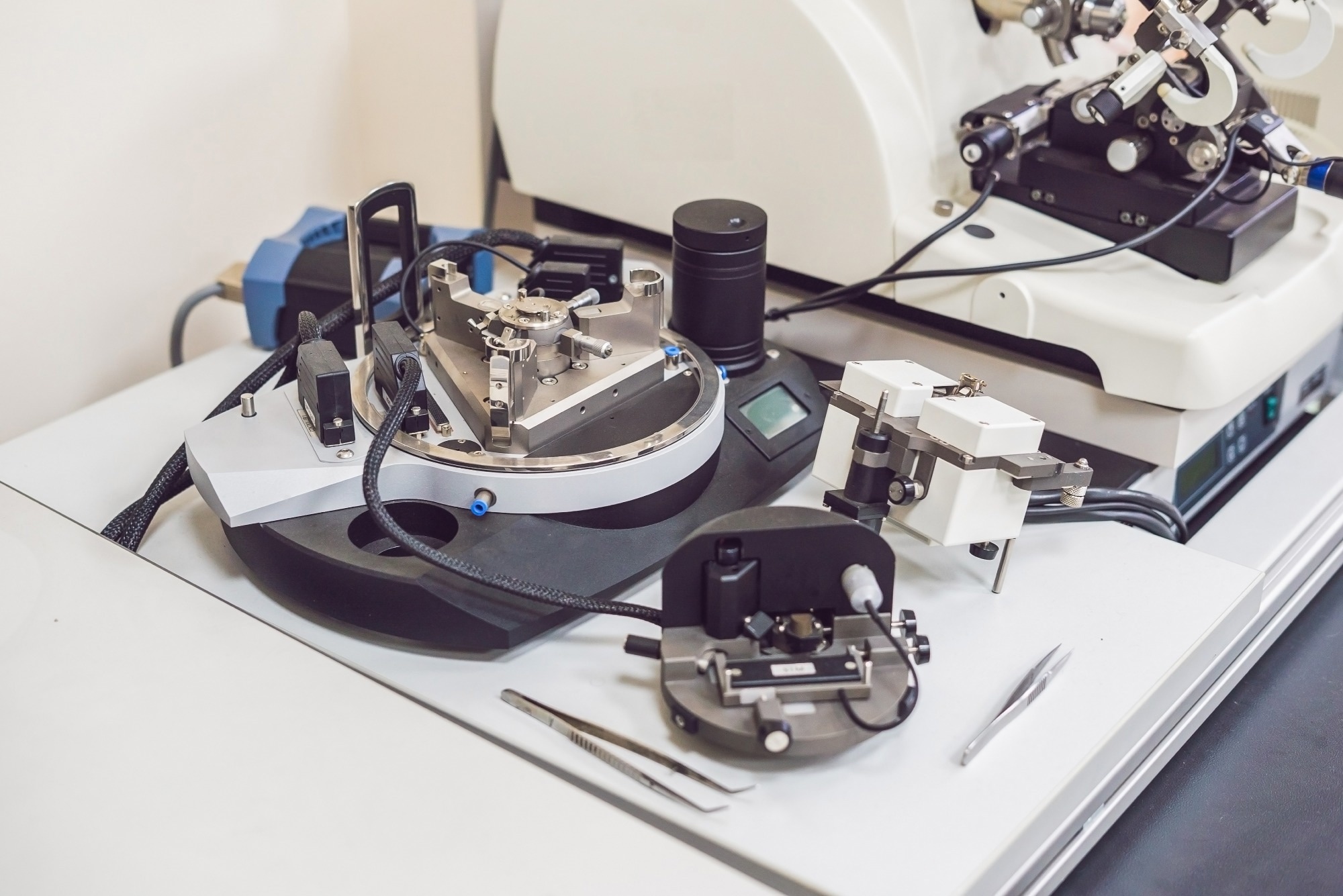In a recent article published in Nature Nanotechnology, researchers conducted a comprehensive study on the hierarchical super-switching behavior of ferroelectric materials, focusing specifically on the perovskite oxide PSTO (Pr0.5Sr0.5TiO3). The research aims to explore the intricate mechanisms underlying the manipulation of ferroelectric domains using advanced techniques, particularly biased atomic force microscopy (AFM).

Image Credit: Elizaveta Galitckaia/Shutterstock.com
Background
Ferroelectric materials exhibit spontaneous polarization that can be reversed by applying an external electric field. This property makes them attractive for various applications, including non-volatile memory devices, sensors, and actuators.
The manipulation of ferroelectric domains at the nanoscale is crucial for enhancing device performance and functionality. Previous studies have demonstrated the ability to control domain structures using electric fields, but the mechanisms governing these processes remain poorly understood.
This research builds on that foundation by investigating how tip bias and scanning trajectories affect the formation and stability of ferroelectric domains in PSTO. It aims to elucidate the relationship between applied bias, domain nucleation, and resulting structural configurations.
The Current Study
The methods employed in this study were designed to address the need for a deeper understanding of ferroelectric domain manipulation at the nanoscale, which is essential for advancing electronic device performance.
The researchers utilized pulsed-laser deposition to create high-quality heterostructures of PSTO, SrRuO3, and DyScO3, ensuring a controlled environment for studying ferroelectric properties. Piezoresponse force microscopy (PFM) was employed to visualize and analyze the ferroelectric domains, allowing for real-time observation of domain switching under varying electric fields. This technique provides valuable insights into local polarization states and their dynamics.
Second-harmonic generation (SHG) measurements were incorporated to investigate the nonlinear optical characteristics of the materials, further explaining the relationship between structural configurations and ferroelectric behavior. By systematically varying the writing bias and scanning trajectories, the study aimed to uncover the mechanisms governing domain nucleation and stabilization.
This comprehensive approach enhances the understanding of ferroelectric switching processes and lays the groundwork for the development of complex nanostructures with tailored functionalities, ultimately contributing to the evolution of next-generation electronic devices.
Results and Discussion
The results revealed a complex interplay between the applied bias, scanning direction, and the resulting domain structures. The authors observed that head-to-head and tail-to-tail super-boundaries exhibited distinct electromechanical responses, indicating a local polarization tilting towards positive and negative out-of-plane directions, respectively. This behavior suggests that charges at these boundaries are not mobile, as evidenced by the lack of conductive AFM contrast.
The study also highlighted the significance of tip bias in influencing the nucleation of ferroelectric domains, with varying bias magnitudes leading to different structural configurations. The authors demonstrated that spiral scanning trajectories could be employed to create intricate domain patterns, with the size and complexity of the structures being dependent on the number of internal cycles in the spiral path.
The research also explored the size dependence of stabilized structures, revealing that the area-to-boundary threshold for stabilization plays a critical role in determining the dimensions of the formed domains. The authors found that by adjusting the writing bias magnitude, they could achieve coercive voltages between 4 V and 6 V, which are essential for effective domain switching.
The study also examined the impact of scanning direction on the handedness of the stabilized structures, concluding that the direction of the spiral scan did not affect the final configuration. These findings provide valuable insights into ferroelectric domain manipulation mechanisms and highlight the potential for designing complex nanostructures with tailored properties.
Conclusion
This study presents a significant advancement in understanding ferroelectric domain dynamics and manipulating these structures using biased AFM. The authors successfully demonstrated the ability to engineer hierarchical super-switching behaviors in PSTO, revealing the intricate relationships between applied bias, scanning trajectories, and domain stability.
The findings have important implications for developing advanced electronic devices, as they pave the way for creating multi-state nanodevice architectures with enhanced functionality. The research underscores the potential of utilizing external stimuli to control ferroelectric properties at the nanoscale, opening new avenues for future investigations in nanotechnology.
Overall, this work contributes to the growing body of knowledge on ferroelectric materials and their applications, providing a foundation for further exploration of complex domain structures and their integration into next-generation devices.
Journal Reference
Checa M., et al. (2024). On-demand nanoengineering of in-plane ferroelectric topologies. Nature Nanotechnology. DOI: 10.1038/s41565-024-01792-1, https://www.nature.com/articles/s41565-024-01792-1